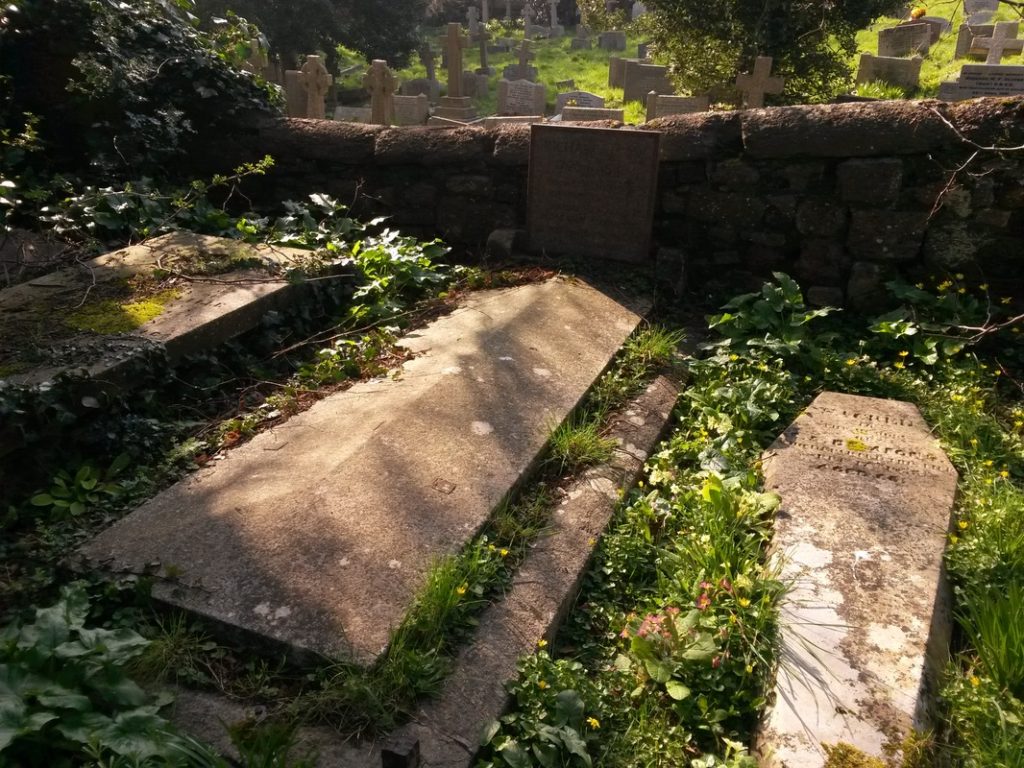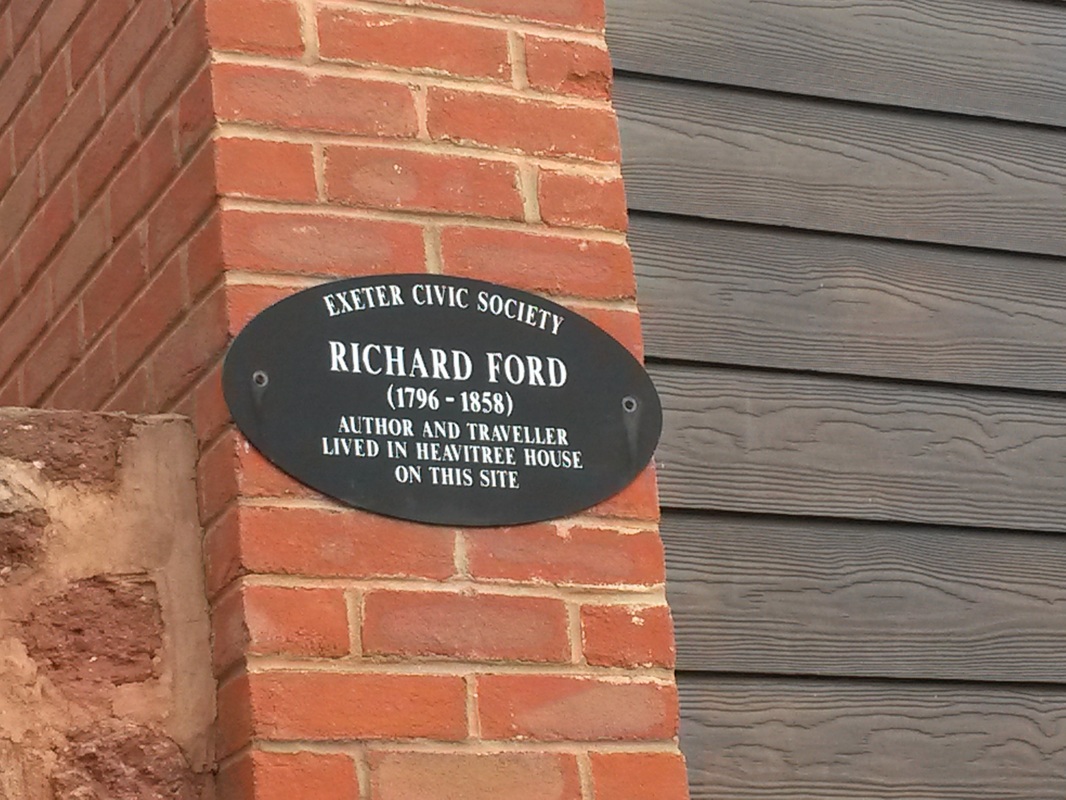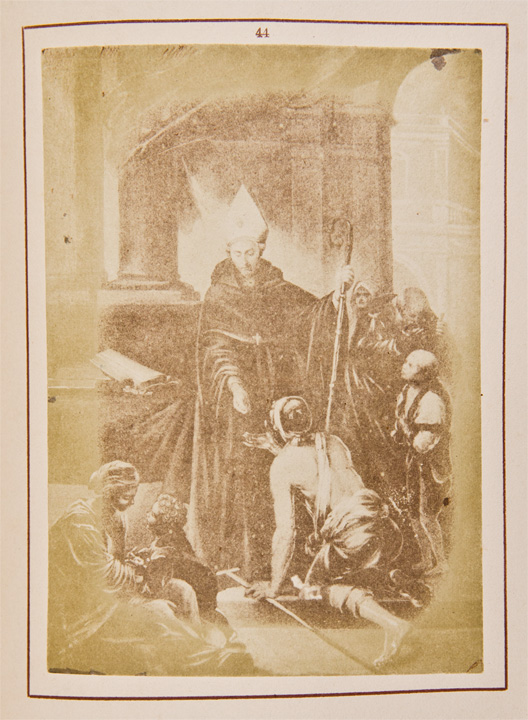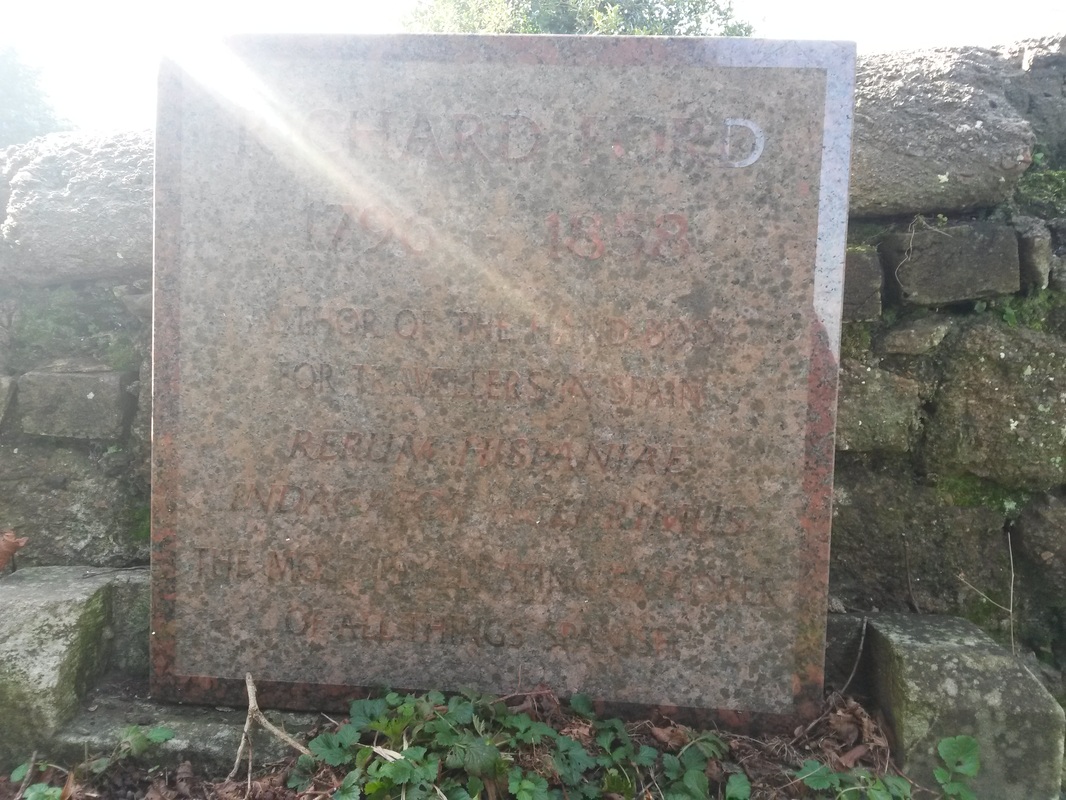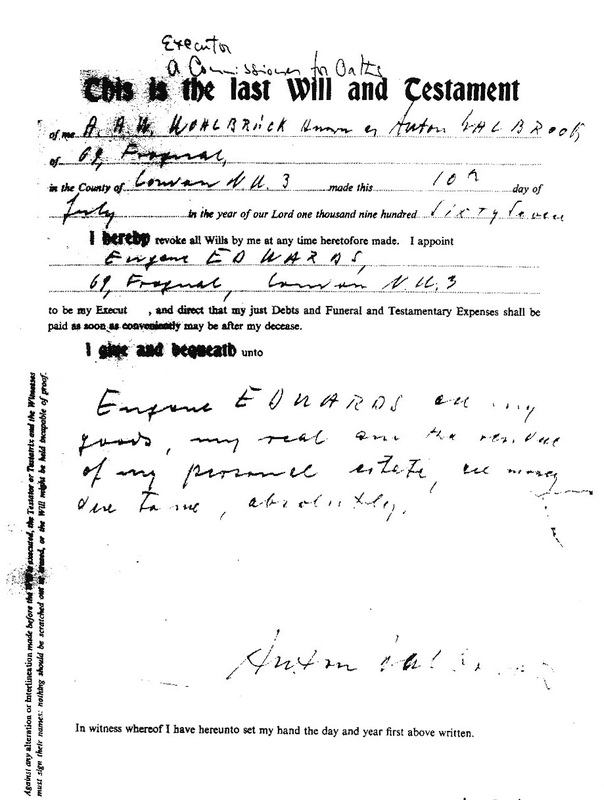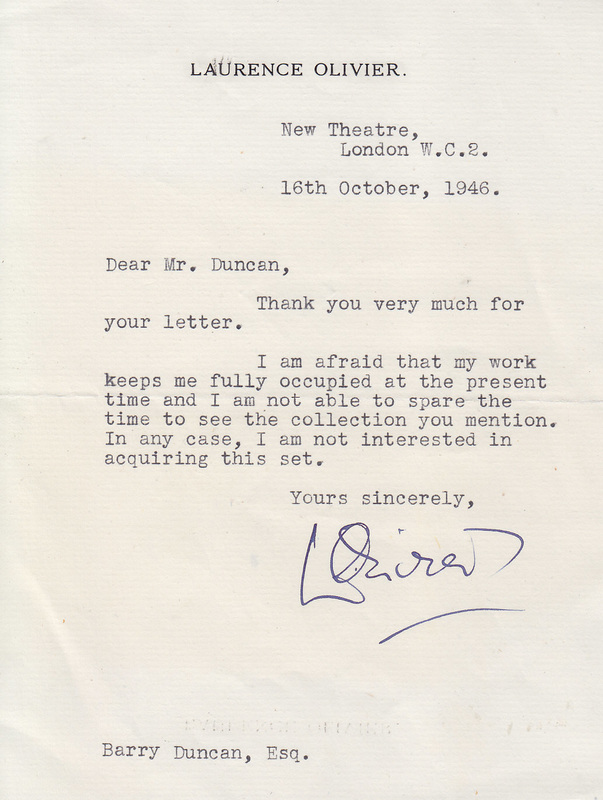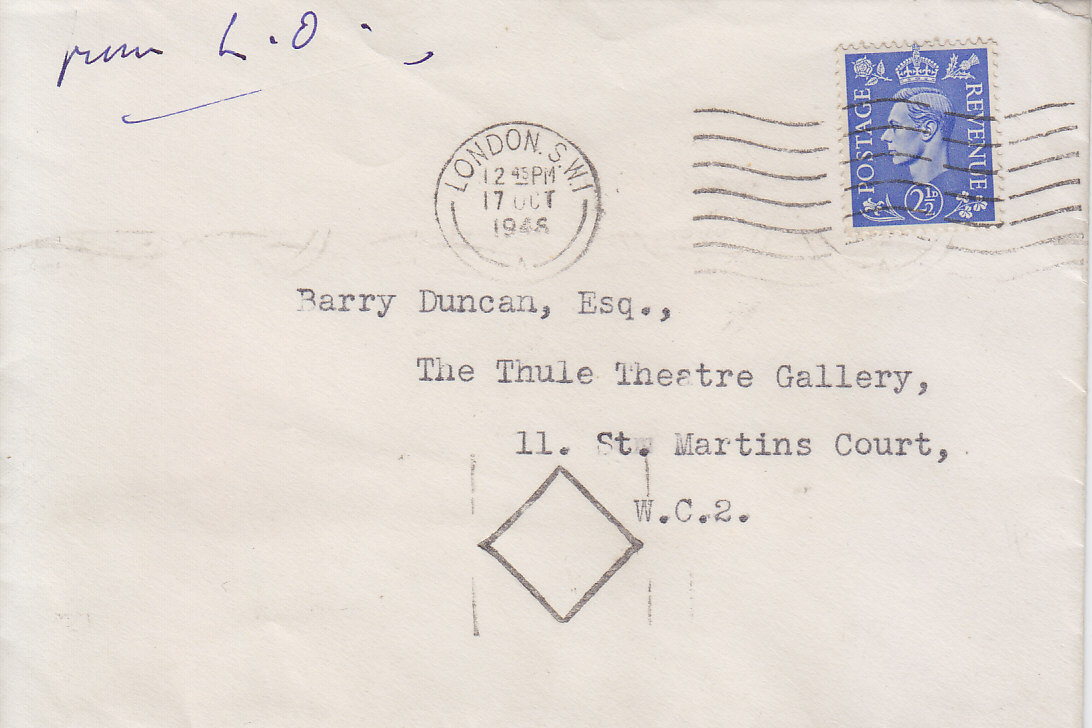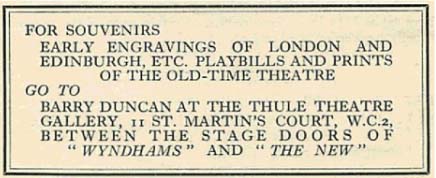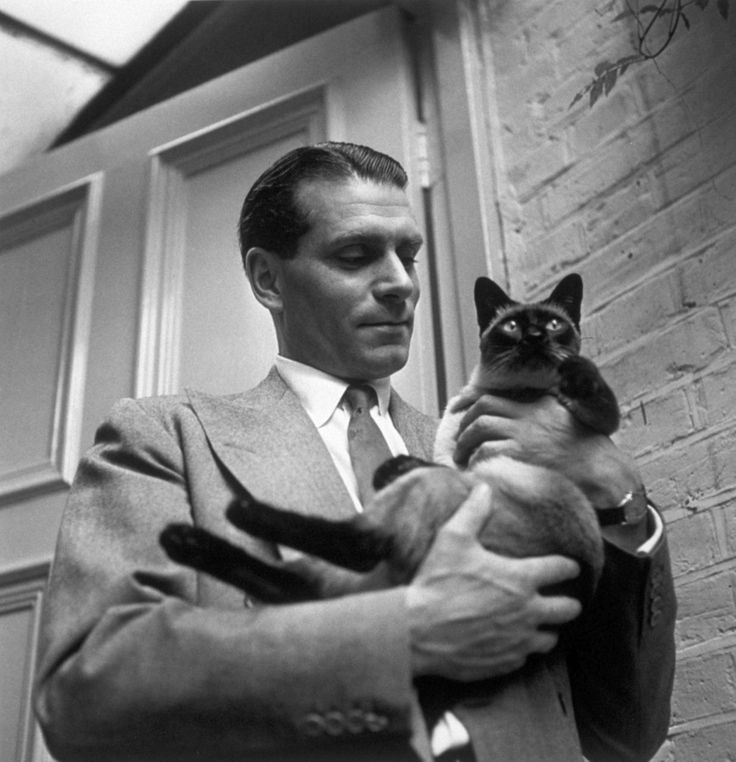Tucked away under a tree in the churchyard of St Michael’s, Heavitreee, by the edge of a path I once walked on a near-daily basis, lies the resting place of Richard Ford (1796-1858), Hispanicist, writer, art collector and historian. After spending several long sojourns in Spain in the early 1830s he moved to Exeter to be near his brother James Ford (1797-1877), later a Canon of Exeter Cathedral. After Richard bought Heavitree House in the summer of 1834, he filled it with books, antiques and artwork that he had brought back from Spain, and laid the gardens out using Moorish designs and artefacts.
In 1840 Richard Ford met the Scottish writer and art historian Sir William Stirling (later Stirling-Maxwell, and 9th Baronet of Pollok (1818-78), who had also travelled in Spain and shared Ford’s deep interest in Spanish art and artists. The two men began corresponding on the topic. Ford’s Handbook for Travellers in Spain (1845) proved highly popular, and was reprinted in 1847, the year before Sir William’s four volume Annals of the Artists of Spain was published. This was the first scholarly history of Spanish art in English, and was chiefly responsible for making known the works of El Greco, Goya, Velazquez, Ribera and Murillo. It was, moreover, the first book on art to be illustrated with photographs. The first three volumes featured texts by Stirling Maxwell, whilst the fourth was a supplement of illustrations printed in a limited edition of 50 copies for his circle of friends and family. Sir William had taken a camera lucida on his first trip to Spain and used this as a drawing aid, but it is possible that his inspiration for using the calotype process to illustrate his book came from seeing Talbot’s Sun Pictures of Scotland (1845) or the earlier Pencil of Nature (1844.) Hill & Adamson were also commissioned to produce calotype images for the volume, but – for various reasons – their work was not included.
There were 68 photographs in all, taken by Nicholas Henneman using Talbot’s calotype process. Henneman had entered Talbot’s service in 1826 but was later trained by him as a photographer and placed in charge of the printing establishment at Reading. Many of the Spanish photographs were made from the original paintings, which had to be photographed outdoors in the sunshine due to the long exposure times required. When this was impossible, existing engravings were used. Several artworks were borrowed from Richard Ford, who died of Bright’s Disease ten years later at Heavitree House on 31 August 1858.
A set of the Annals of the Artists of Spain was retained at Pollok House, Sir William’s mansion in Glasgow, and a place very familiar from my childhood: in addition to regular visits to the parkland surrounding the house, my parents often went to dinner dances there, and I got to see inside the house from time to time. I still have distinct memories of seeing prints by Goya and Piranesi around the walls. When I began working in the Special Collections Department of Glasgow University Library, the Stirling Maxwell collection of emblem books became a favourite haunt, second only to the early photographic collections. Sir William’s fascination with emblem literature led him to collaborate with Richard’s brother, Canon James Ford, on the book ‘Ut Pictura poesis,’ or An attempt to explain, in verse, the Emblemata Horatiana of Otho Vaenius (London, 1875.) The preface and epigrams were written by Ford, while Stirling-Maxwell provided bibliographical notes.
The Museo Nacional del Prado in Madrid is currently running an exhibition about Sir William’s volume – but Copied by the Sun/Copiado por el sol: Talbotype Illustrations to the Annals of the Artists of Spain closes tomorrow, so you’ll need to hurry if you want to catch it! Otherwise, there’s a massive catalogue published to accompany the exhibition, and the following are also well worth reading if anyone wishes to learn more:
Hilary Macartney, ‘William Stirling and the Talbotype volume of the Annals of the Artists of Spain.‘
History of Photography 30:4 (2006) pp.291-308‘The Reproduction of Spanish Art: Hill and Adamson’s calotypes and Sir William Stirling-Maxwell’s Annals of the Artists of Spain.’
Studies in Photography (2005), pp. 16-23.Gilbert, E.W. ‘
Hilary Macartney, ‘William Stirling and the Talbotype volume of the Annals of the Artists of Spain.‘
History of Photography 30:4 (2006) pp.291-308‘The Reproduction of Spanish Art: Hill and Adamson’s calotypes and Sir William Stirling-Maxwell’s Annals of the Artists of Spain.’
Studies in Photography (2005), pp. 16-23.Gilbert, E.W. ‘
Richard Ford and His Hand-Book for Travellers in Spain‘
The Geographical Journal Vol. 106, No. 3/4 (Sep-Oct 1945), pp. 144-15Radford, Cecily. ‘Richard Ford (1796-1858) and his Handbook for Travellers in Spain.’
Transactions of the Devonshire Association, Vol. 90, (1958) pp.146-166
